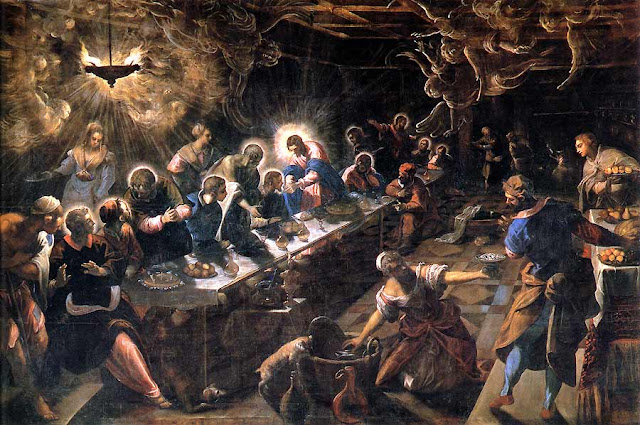Tintoretto (1518-94) was a 16th century Venetian painter. His work is often classed as mannerist because of his stylisation and his use of acute depths of space, but contains many elements of the Baroque - particularly the drama of light and shade.
His paintings are often on a colossal scale.
Here is the abstract for a Masters thesis by Van Khanh Pham, which discusses Tintoretto as a stage and costume designer:
Tintoretto, one of the great Venetian masters of the sixteenth century, is renowned for his compositional innovations. The painter also worked as a stage and costume designer for the Compagnie della Calza. As a result, he selected and combined elements of other disciplines in his pictures. This thesis focuses on the fusion of the arts in Tintoretto's imagery. A comprehensive analysis of this interdisciplinary aspect reveals the subtlety of Tintoretto's creative mind. The challenge is to discover Tintoretto as a stage designer who conceived pictures as theatrical performances. Instead of the traditional preparatory sketch, he built a miniature stage in order to visualize the scene in tangible forms existing in light and space. The design of the setting, the gestural choreography of his personages and the distribution of lighting were analysed and then translated into painted illusion. With this unusual methodology, Tintoretto invented forceful mise-en-scenes which induce the spectator to perceive the imaginary as real. A substantial knowledge of stagecraft also enabled him to bring to vibrant life the dramatic episodes of the Bible on canvas. Through such artfully constructed theatrical illusion, Tintoretto not only re-creates a vision for his audience, but above all, conveys the depth of his spiritual experience.
The full text of the dissertation can be read by following the link to the pdf here.





No comments:
Post a Comment